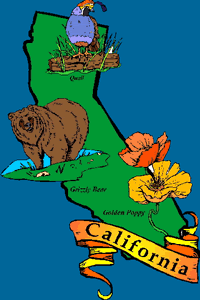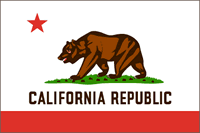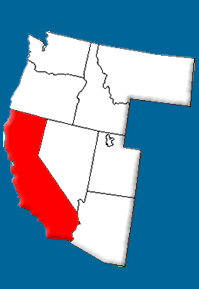 History:
Juan Rodriquez Cabrillo was the first European to see the coast of
what is now California. He was a Portuguese explorer hired by the Spanish to lead an expedition in search of a passage connecting the Pacific and Atlantic oceans. Instead, he discovered San Diego Bay in 1542.
In 1579, Sir Francis Drake, an English sea captain, sailed along the coast of California and stopped just north of San Francisco Bay to repair his ship. Drake called the land "New Albion" and claimed it for England.
Over the next century, the Spanish continued to explore the area. A Franciscan missionary, Junipero Serra, founded a mission in southern California in 1769. It was the first of a chain of 21 Spanish missions near the site of present-day San Diego. These missions played an important role in the Spanish colonization of California. While their function was to bring Christianity to the Native tribes of the area and teach them skills such as weaving and farming, they also provided a foundation for military, spiritual, and commercial control of the region.
Several "presidios" or military forts were built near San Diego (1769), Monterey (1770) and San Francisco (1776). Gradually, Spanish settlers established villages or "pueblos" along the coast. Unfortunately, the presence of these European colonists also resulted in new difficulties for the Native Americans of California. Exposure to unfamiliar diseases, forced manual labor, and the reality of warfare with the white man caused the slow but steady decline of the Native American population in California.
Spain was not the only country interested in the colonization of California.
The Russians were hoping to expand their fur trade south along the Pacific Coast. In 1812 they established Fort Ross in northern California. But the Monroe Doctrine of 1823 effectively closed North and South America to further European colonization. By 1840, Russia had left the California region.
The United States was also interested in California for trading purposes. The first American ship reached the coast of California from the East in 1796. In 1826, Jedediah Strong Smith, a trapper, became the first American to reach the area by land. John Sutter, a Swiss-born immigrant, also made the long journey over land after receiving a large land grant in the Sacramento Valley. By 1841, large numbers of American immigrants were heading west to California including the tragic Donner Party, which became stranded during a heavy snowstorm while crossing the Sierra Nevada.
California became a province of Mexico in 1822, just one year after Mexico declared independence from Spain. Under Mexican control, the mission lands became part of huge cattle ranches and estates.
The years that followed were turbulent. California fell under the rule of a series of governors appointed by Mexico but these outsiders were resented by many Californians. The last Mexican governor was driven out in 1845 and the war between the United States and Mexico began in 1846. Later that year, U.S. Navy Commodore John D. Sloat claimed California for the United States. Mexico officially ceded the California territory to the United States in 1848 as part of the Treaty of Guadalupe Hidalgo.
Just days before the signing of the Treaty of Guadalupe Hidalgo, gold was discovered at the site of John Sutter's sawmill and the famous California Gold Rush began. Thousands of gold miners, or "forty-niners," from all over the world began rushing to California hoping to find easy riches. The population of this territory increased from 26,000 in 1848 to nearly 400,000 in 1860.
The cities of San Francisco and Sacramento grew and flourished. But problems also emerged. The mining camps and booming cities also gave rise to crime, violence, and the need for a strong civil government. Forty-eight delegates came forward when General Bennett Riley, California's military governor, called for a constitutional convention. The convention met in September of 1849 and by October 13, a constitution was created. Despite heated debates over the issues of sectionalism and slavery, Congress admitted California as a state on September 9, 1850. Sacramento was established as the state's capital in 1854.
By May of 1869, the transcontinental railroad had connected California with the rest of the nation. Until then, all communication and transportation with California was dependent upon ships, telegraph, the Pony Express, and the stagecoach. |









